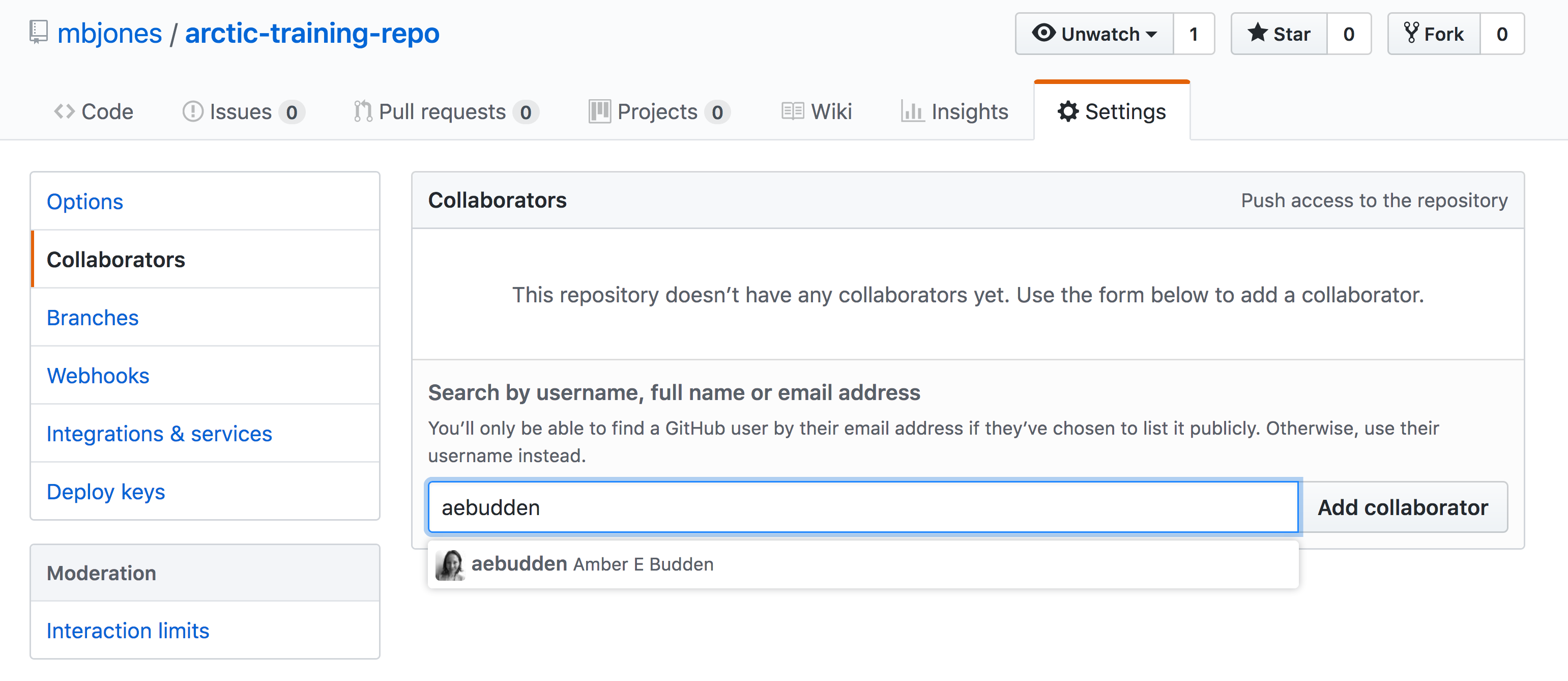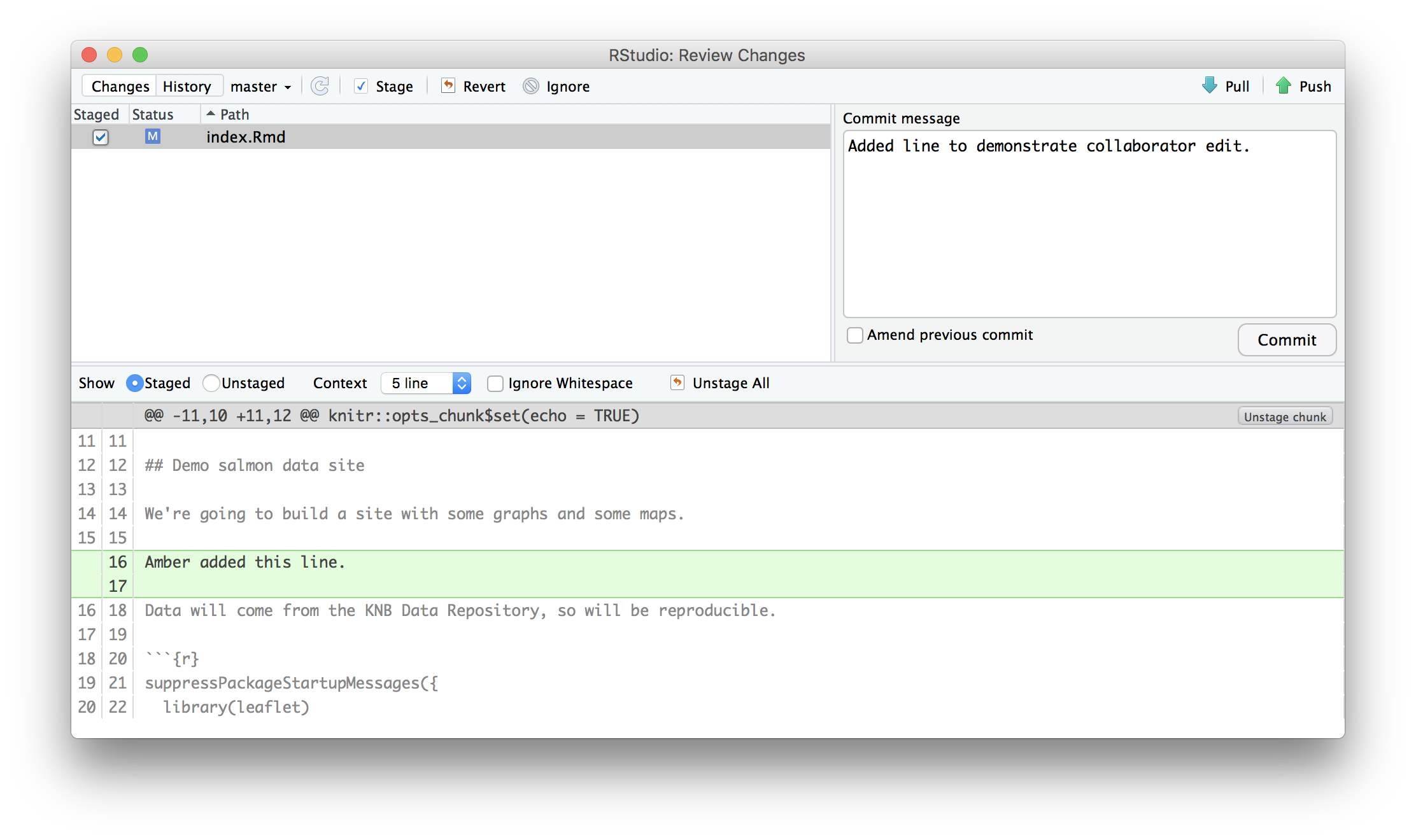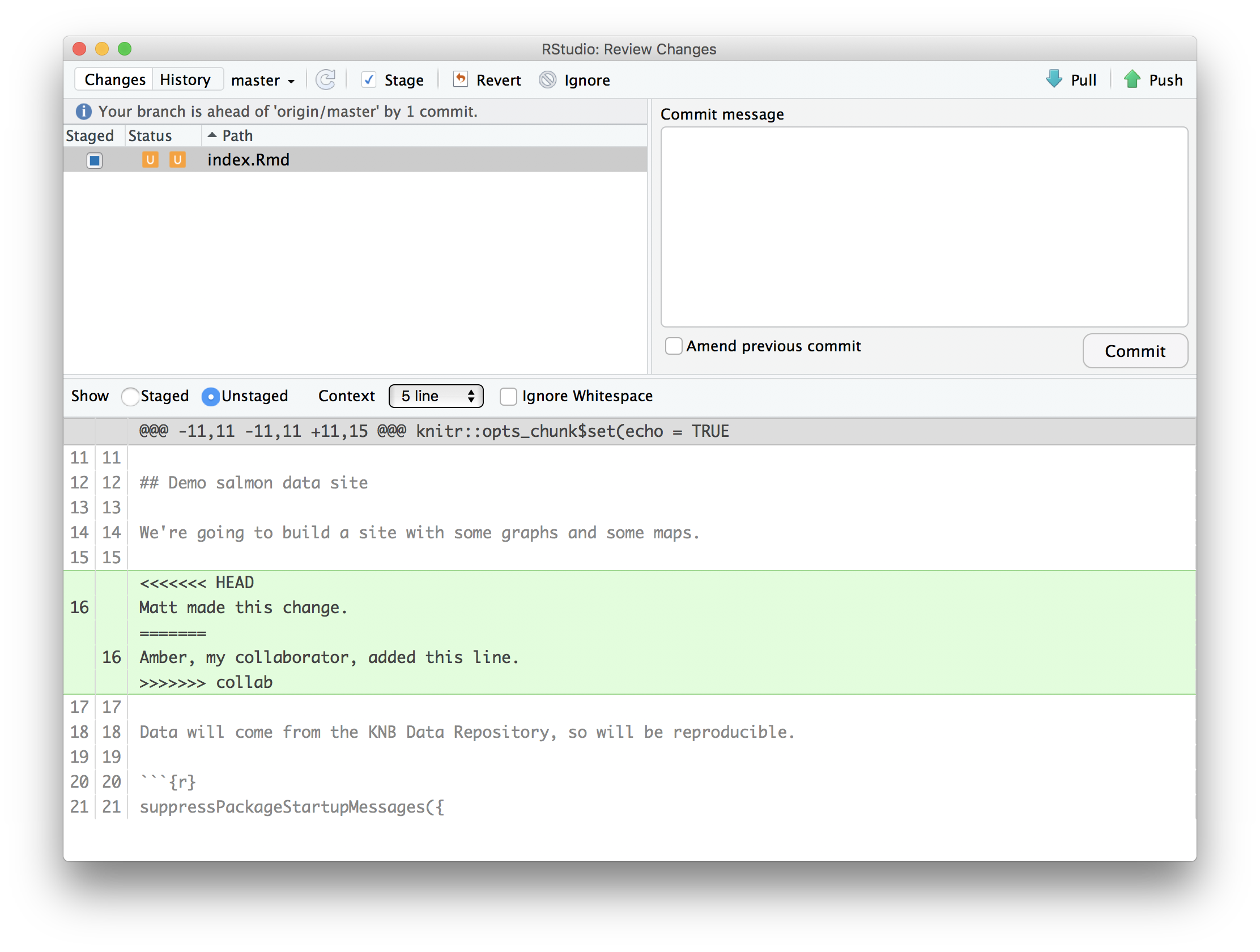9 Git: Collaboration and Conflict Management
9.1 Learning Objectives
In this lesson, you will learn:
- How to use Git and GitHub to collaborate with colleagues on code
- What typically causes conflicts when collaborating
- Workflows to avoid conflicts
- How to resolve a conflict
9.2 Collaborating with Git
Git is a great tool for working on your own, but even better for working with friends and colleagues. Git allows you to work with confidence on your own local copy of files with the confidence that you will be able to successfully synchronize your changes with the changes made by others.
The simplest way to collaborate with Git is to use a shared repository on a hosting service such as GitHub, and use this shared repository as the mechanism to move changes from one collaborator to another. While there are other more advanced ways to sync git repositories, this “hub and spoke” model works really well due to its simplicity.
9.2.1 Activity: Collaborating with a trusted colleague
Settings. Working in pairs, choose one person as the ‘Owner’ and one as the ‘Collaborator’. Then, have the Owner visit their arctic-training-repo repository created earlier, and visit the Settings page, and select the Collaborators screen, and add the username of your Collaborator in the box.

Once the collaborator has been added, they should check their email for an invitation from GitHub, and click on the acceptance link, which will enable them to collaborate onthe repository.
Collaborator clone. To be able to contribute to a repository, the collaborator must clone the repository from the Owner’s github account. To do this, the Collaborator should visit the github page for the Owner’s repository, and then copy the clone URL. In R Studio, the Collaborator will create a new project from version control by pasting this clone URL into the appropriate dialog (see the earlier chapter introducing GitHub).
Collaborator Edits. With a clone copied locally, the Collaborator can now make changes to the index.Rmd file in the repository, adding a line or statment somewhere noticeable near the top. Save your changes.
Collaborator commit and push. To sync changes, the collaborator will need to add, commit, and push their changes to the Owner’s repository. But before doing so, its good practice to pull immediately before committing to ensure you have the most recent changes from the owner. So, in R Studio’s Git tab, first click the “Diff” button to open the git window, and then press the green “Pull” down arrow button. This will fetch any recent changes from the origin repository and merge them. Next, add the changed index.Rmd file to be committed by cicking the checkbox next to it, type in a commit message, and click ‘Commit.’ Once that finishes, then the collaborator can immediately click ‘Push’ to send the commits to the Owner’s GitHub repository.

Owner pull. Now, the owner can open their local working copy of the code in RStudio, and pull those changes down to their local copy.
Congrats, the owner now has your changes!
Owner edits, commit, and push. Next, the owner should do the same. Make changes to a file in the repository, save it, pull to make sure no new changes have been made while editing, and then add, commit, and push the Owner changes to GitHub.
Collaborator pull. The collaborator can now pull down those owner changes, and all copies are once again fully synced. And you’re off to collaborating.
9.3 Merge conflicts
A merge conflict occurs when both the owner and collaborator change the same lines in the same file without first pulling the changes that the other has made. This is most easily avoided by good communication about who is working on various sections of each file, and trying to avoid overlaps. But sometimes it happens, and git is there to warn you about potential problems. And git will not allow you to overwrite one person’s changes to a file with another’s changes to the same file if they were based on the same version.
The main problem with merge conflicts is that, when the Owner and Collaborator both make changes to the same line of a file, git doesn’t know whose changes take precedence. You have to tell git whose changes to use for that line.
9.4 How to resolve a conflict
9.4.1 Abort, abort, abort…
Sometimes you just made a mistake. When you get a merge conflict, the repository is placed in a ‘Merging’ state until you resolve it. There’s a commandline command to abort doing the merge altogether:
git merge --abortOf course, after doing that you stull haven’t synced with your collaborator’s changes, so things are still unresolved. But at least your repository is now usable on your local machine.
9.4.2 Checkout
The simplest way to resolve a conflict, given that you know whose version of the file you want to keep, is to use the commandline git program to tell git to use either your changes (the person doing the merge), or their changes (the other collaborator).
- keep your collaborators file:
git checkout --theirs conflicted_file.Rmd - keep your own file:
git checkout --ours conflicted_file.Rmd
Once you have run that command, then run add, commit, and push the changes as normal.
9.4.3 Pull and edit the file
But that requires the commandline. If you want to resolve from RStudio, or if you want to pick and choose some of your changes and some of your collaborator’s, then instead you can manually edit and fix the file. When you pulled the file with a conflict, git notices that there is a conflict and modifies the file to show both your own changes and your collaborator’s changes in the file. It also shows the file in the Git tab with an orange U icon, which indicates that the file is Unmerged, and therefore awaiting you help to resolve the conflict. It delimits these blocks with a series of less than and greater than signs, so they are easy to find:

To resolve the conficts, simply find all of these blocks, and edit them so that the file looks how you want (either pick your lines, your collaborators lines, some combination, or something altogether new), and save. Be sure you removed the delimiter lines that started with <<<<<<<, =======, and >>>>>>>.
Once you have made those changes, you simply add, commit, and push the files to resolve the conflict.
9.5 Workflows to avoid merge conflicts
Communicate often. Tell each other what you are working on.
Pull -> Edit -> Add -> Pull -> Commit -> Push
Pull before every commit, and commit often in small chunks.